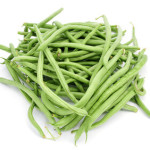 Kenya is one of the major countries in Africa that ship French beans to Europe. The others include Egypt, Morocco and Senegal. A top destination is the United Kingdom to which country Kenya exported 19000MT in 2016. About 9000MT of all exports to Europe enter by the way of the Netherlands which is the market leader for the distribution of tropical imports to the rest of the EU. Though countries like Spain and France grow their own, there is only a single season and hence the need for off-season tropical imports. Because of the labor intensive process of growing and picking the green beans, here is a review of current good practices for local farmers and exporters.
Kenya is one of the major countries in Africa that ship French beans to Europe. The others include Egypt, Morocco and Senegal. A top destination is the United Kingdom to which country Kenya exported 19000MT in 2016. About 9000MT of all exports to Europe enter by the way of the Netherlands which is the market leader for the distribution of tropical imports to the rest of the EU. Though countries like Spain and France grow their own, there is only a single season and hence the need for off-season tropical imports. Because of the labor intensive process of growing and picking the green beans, here is a review of current good practices for local farmers and exporters.
French bean cultivation is a demanding routine which does best on the small-scale. This is because the plants grow in immaculate rows with supports for climbing. Taking care of them through the forty five days of minimum growth period involves basic maintenance and pest management. The crop requires about 150 kilograms per hectare of fertilizer but about 2 tons of compost manure can do the trick for organic growth. Due to the danger of surpassing chemical residual levels that may lead to the recall of the crop, organic pest control like intercropping is a recommendation.
French beans demand plenty of water that varies throughout the season. For example, the seedlings require 35 millimeters each seven days in the first ten days of transplanting. This goes up to 50 millimeters during the ten days following blooming. Finally 35 millimeters of water each week will be beneficial during the pod-sprouting period.
On the side of the value chain, strategy is as necessary as labor is during the farming part. The first thing is that of securing orders during the high season that runs between autumn and spring (September through March). To ensure the availability of the produce by the specified order date, local farmers usually depend on irrigation as by then the long rains will have gone.
Kenya French beans require from 45 days to close to two months before harvesting. Harvesting from a well-maintained field can produce from the average 4.2 tons per acre to up to 6 tons per acre. The best pods to harvest are usually 6 to 9 millimeters in total width. The optimal length is that of between 12 and 14 centimeters.
The next step is usually that of liaising with import companies with which farmers have made orders beforehand. Small and medium exporters are the best to handle the export processing as they are logistically equipped to communicate on behalf of the farmers. There are also chances of canning the produce for sale as processed foodstuff. There are companies offering freezing and canning services in Nairobi.
The third step is that of preparing the Kenya French beans for export. Because of their extreme perishability and delicacy, proper loading and packing is necessary. Export markets require them in 6.8 kilograms for the smallest crates. The larger produce boxes can contain between 12 and 14 kilograms.
The fresh produce then goes through an inspection process at the Kenya Plant Health Inspectorate Services (KePHIS) to ensure that it has less than 0.01 percent of minimum residual levels (MRLs). It is notable that the specified MRL level changes in individual countries. For example in the UK, Germany and Holland, there are tougher measures to ensure no crops with high residual chemicals enter their markets.
French beans often attract a lot of rivalry in the international market especially when import destinations can produce their own. This is usually the case in April through December. Other suppliers like Guatemala and North Africa countries also usually produce theirs in both seasons through irrigation. At such durations, sister crops like snap peas and snow peas are ideal for export from Kenya. They are usually receptive and have few competitors.

